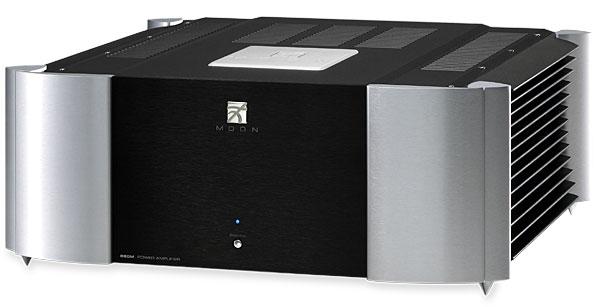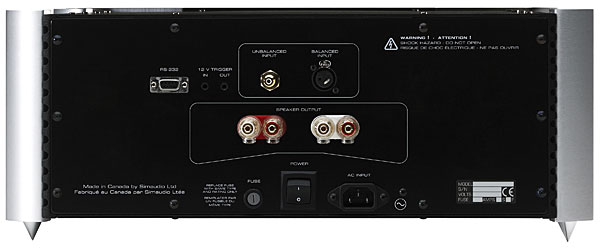| Columns Retired Columns & Blogs |
Well after years of being on the sidelines I decided to voice my concerns for the high end industry. Since my teenaged years I have loved the listening to good music through good equipment. I became an Electrical and Mechanical engineer, which was due in part to my love for building my own DIY equipment at home.
After reading Stereophile’s review of the Simaudio’s Moon Evolution 800M, I just couldn’t stand on the sidelines and not voice a concern about specmanship in the highend audio industry. I thought the large differences in published specifications vs. actual measurements was relegated to consumer electronics and not to five and even six figure (hopefully) state of the art audio equipment. The Evolution 880 clearly does not achieve some of the most important specifications that amplifiers are measured to.
Here below I distilled my concerns and finding:
Spec’d Output Power 8 ohms: 800W in 8ohms
Measured Output Power 8 ohms: 800W in 8 ohms
Meet Spec.: Yes
Spec’d Output Power 4 ohms: 1600W in 4 ohms
Measured Output Power 8 ohms: 1050W in 4 ohms (fuse blown)*
Meets Spec.: No (<1.5x discrepancy)
Spec’d Output Current: 42A continuous
Calculated Output Current: Fuse blew into 4 ohms @ 1050W which is 16Arms
Meets Spec.: No (<2.6 discrepancy)
Spec’d Output Impedance: 0.004 Ohms
Measured Output Impedance: 0.125 – 0.132
Meets Spec.: No (<30X discrepancy)
Spec’d Frequency Response: 10 – 200Khz (0, -3db)
Measured Frequency Response: 90khz -3db
Meets Spec.: No (<2X discrepancy)
Spec’d Slew Rate: 70V/us
Actual Calculated Slew Rate: 20.5V/s
Meets Spec.: No (<3.4X discrepancy)
*With a 10A “long fast blow” fuse maximum input power is 1200W max.
OUTPUT POWER
The output power specification for this amplifier is continuous for only an 8 ohm load. The 4 ohm specification of 1600W is clearly momentary, or “peak” as the 10A fuse limits the output power to 1050W.
The argument that using a continuous sine wave to test amplifiers is not fair to the amplifier is incorrect. Wattage is Wattage, whether it’s from a music source or a function generator. A music source is said to have dynamics and therefore not tax the amplifier as a continuous sine wave does. This is true, but to do away with the ambiguity of testing amplifiers, the Industry uses the term as “rated continuous output power”. If an amplifier is rated to output 800W most manufactures that follow IEC specification would specify it for continuous output power. This should be done with a sine wave a 1khz, but even if it’s done with a music source, the average power must equal a continuous 800W. Of course to output 800W of continuous RMS music power would require clipping the signal or having the music highly compressed. Power is Power. Can the Evolution output 1600W of continuous music power into 4 ohms? No.
TEMPERATURE
The other very alarming measurement of the Evolution 800M is that a 1/3 power into 8 ohms the heat sinks reach dangerous temperatures. Other that than the high end amplifier industry, most manufactures limited exposed surface temperatures to 50C or less. The high end industry seems to be fine with much higher temperatures. The Evolution 800M has surface temperatures of 73.5C. The SAFETY standard UL/ IEC 60950-1 for electronics allows for metal surfaces to reach 70C.
As with all of Simaudio's amplifier, the heat sinks are mounted with the fins in a horizontal plane rather than the traditional vertical plane. I assume they chose this for looks rather than cooling efficiency, since this arrangement is a very poor utilization of natural convection cooling. The purpose of using a heat sink with vertically mounted fins is to take advantage of the rising natural convection air moving over as large of a surface area as possible, with little or no obstruction in its motion.
CONCLUSION
I wish Stereophile would include in their review language that clearly states that the product does not meet its specification in the final summary of the measurements section of the articles. Instead in this article a poor excuse is given for it not being able to drive low impedance loads, but the review said that’s OK because music is not a sign wave. For heaven sake, this is a $42,000 amplifier and should perform as specified as do many "afordable" Best Buy purchased equipment.
I am very happy that Sterophile does actually test the equipment they listen to. Most other reviewers do not. It is a great service to all of us. The whole purpose of the review is to provide both objective and subject information to the reader so that they may know what they will be getting when they purchase the item.
I understand that the subjective portion of the review can have no objective scales, but when objective measurements are made they are very much tied to real physical scales set forth by various international agencies. My only other concern is that I have found in the last few sentences of the measurement section, a subjective assessment made of the objective measurements that not only seems to trouble others ( as I have read in posts on stereophile.com) but myself as well. There have been recent reviews of amplifiers that for their astronomical price have very poor measurements. At the end of the review a subject remark is made like “This is an amplifier that is as well-engineered as it is beautiful to look at.” That may be the reviewer’s opinion, but as an Electrical Engineer of 20 years’ experience and who closely follows both DIY and professional audio design, I had a very different opinion and hold the standards for saying “This is an amplifier that is as well-engineered “for such high priced equipment to a higher level. I would never have said what the review said for that product.
I am trying to be constructive with my comments and mean no disrespect to any of the reviewers.







 I understand it could double as heater during the cold months. This brings about the possibility of owning another amp that doesn't get hot for the summer months. A win-win for the high end dealers that wish to double their profits.
I understand it could double as heater during the cold months. This brings about the possibility of owning another amp that doesn't get hot for the summer months. A win-win for the high end dealers that wish to double their profits.





































